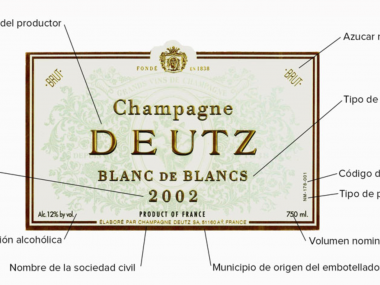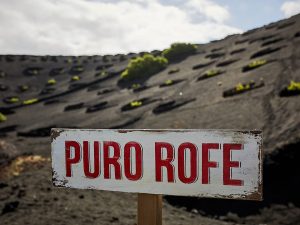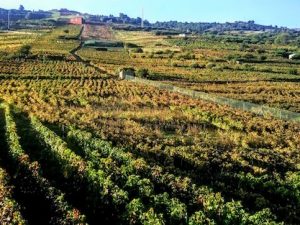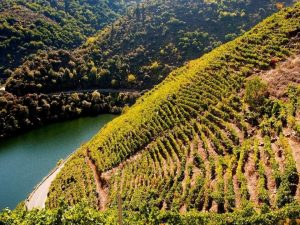Listán negro is the most predominant red grape in the Canary Islands, which is why it is known as the island grape.
It is a fruit that, when used to make wine, produces grapes with smooth flavours and polished tannins it is a fruit that, when used to make wine, produces wines with smooth flavours and polished tannins, but with a very accentuated fruity tendency. Its aromatic peculiarities are also very characteristic, as is the delicate acidity in its flavour.
Regardless of the vintage, it is a grape that tends to bring a mineral background to the wine, due to the mineral background to the wine, due to the area where it is produced.
Introduction of wine to the Canary Islands
The introduction of wine in the Canary Islands began with the need to satisfy the demand for wine in the Canary Islands the need to satisfy the demand for the consumption of this beverage by sailors who dared to visit the sailors who dared to visit nearby places, but when they made a stopover in these islands, they expressed their desire for wine islands, they expressed their desire to enjoy wine.
The climatic characteristics, the type of soil and the the orography also contributed to the interest of some oenologists in introducing different grape varieties for the different grape varieties for the production of different wines.
The consequence of this is the immense number of vine varieties on the islands of vine varieties on the islands, of which there are around 80, of which 29 were hitherto unknown of which 29 were previously unknown. However, one of the most emblematic varieties on Gran Canaria is the list variety in Gran Canaria is the listán negro variety, as it is used to make most of the region’s red wines most of the region’s red wines are made from this variety.
History of listán negro
We must begin by emphasising that the history of canary Island wines were almost entirely white until the 18th century. They were the product of the processing of grapes of varieties such as Malvasia, Listán Blanco, Moscatel and Moscatel, Listán Blanco, Moscatel and Vijariego.
However, in the middle of the 18th century, the Malvasia, Listán Blanco, Moscatel and Vijariego grape varieties began to decline malvasia grape began to decline and a very special white grape began to arrive in Tenerife a very particular white grape began to arrive on Tenerife, as it had a red wine-coloured tone and with a flavour made alcoholic with eau-de-vie.
It was known as Falso Madeira, made mainly from the Listán Blanco grape variety, but with the addition of red wine from the of red wine from the mainland. In addition, a touch of ‘aguardiente de Cádiz’ was added eau-de-vie from Cádiz.
The winegrowers, opposed to the importation of this wine wine, were prompted to start planting red grape varieties in Tenerife, with the listán negro being the most popular in Tenerife, with the listán negro being the most popular among the various species.
From that time onwards, this variety began to to migrate to different places until it reached the Canary Islands.
Who introduced the grape varieties to the Canary Islands? Canary Islands?
Matías Gálvez was the one who introduced some of the grape varieties to the Canary Islands Some of the grape varieties from Andalusia to the Canary Islands, including reds, due to the demand reds, due to the demand for consumption of the Falso Madeira.
At that time, the reds were not destined for the production of pure wines, but rather for the production of pure wines, but were blended with other varieties. From in fact, they were not even grown in groups, but the vines were intermingled with the other varieties were not even grown in groups, but intermingled with other varieties. There was a reason for this, and that was that it was believed that the red varieties helped to preserve the white wines white wines.
thus, all the islands gradually included listán negro among their grape varieties, with Lanzarote being one of them lanzarote was the last to produce wines with this grape, due to its climatic conditions lanzarote was the last to produce wines with this grape, due to its climatic conditions. The same began with examples produced with Listán Blanco, due to its climatic conditions produced with Listán Blanco, as this is a very productive grape. Later, other varieties such as Listán other varieties were introduced, such as Listán Negro, but as in the other as on the other islands, it was only used for blending.
The planting of listán negro continued for several centuries, but it was not until the 19th century that it was introduced centuries, but it was not until the 19th century that red wine began to be produced for direct consumption consumption, which was demonstrated at the National Wine Exhibition of 1877, when it was 1877, when it was reported, among other things, that the listán negro variety was a fruit present in all the vineyards of the region black listán was a fruit present on all the islands.
About the listán negro variety
The listán negro is a very vigorous grape variety grape variety that is characterised by its high productivity, resistance and good fertility. It has adapted perfectly to the volcanic soils of the Canary Islands volcanic soils of the Canary Islands, which is why it is known as the “island grape” the island grape.
It has medium-sized, compact bunches and its berries are spherical and spherical in shape spherical and medium-sized berries. Its colour is one of the particularities of the fruit, as it has a blackish blue hue. It has it also has very particular sugar concentrations, which is why it is considered to be a grape that is very it is considered a grape that adapts very well to dry climates.
Listán negro, the island grape
The Canary Islands have an area of land that has mostly been devoted to the cultivation of black listán has been devoted to the cultivation of more than 6 varieties of grapes. Among among them is the listán negro grape, with a 24% share. And the fact is that, thanks to its ability to withstand dry climates, it has been possible to achieve a greater area of has achieved a greater extension of its cultivation than other varieties.
Characteristics of the listán negro grape
The listán negro grape is classified by the experts as as a reflection of the volcanic character of the Canary Islands adapted to the particular climatic conditions of this area, as well as providing an unmistakable area, brings an unmistakable mineral flavour to the wines in which it is included included.
It is a variety that provides very peculiar aromas, with special touches of black fruits. It also has balanced acidity and, depending on the maceration process, its acidity can sometimes be sometimes there is no acidity at all. For this reason, it often has to be blended with other varieties to blended with other varieties to compensate for the lack of this element.
It is a variety known by other names such as almuñeco, palomino negro, negra común, forastera negra or tempranillo. Although many claim that it is 100% native to the Canary Islands, there are theories that indicate that it comes from Tenerife indicate that it comes from Tenerife.
Red wines with listán negro
The listán negro grape variety is used to produce young red wines, crianza wines and even sweet wines are produced with the listán negro grape variety. Some of the most are listán negro, Hollera, Tinto Monje and Monje Tradicional Traditional. The sweet wines include Vino Padre Miguel Monje and some high-end rosés some high-end rosés.
You can also find examples of carbonic maceration carbonic maceration, and some young wines with excellent alcohol content and a balanced acidity balanced acidity.
Rosé wines with listán negro
The listán negro has had a very particular behaviour in Lanzarote, one of the particular in Lanzarote, one of the Canary Islands. With the same grape variety grape variety it has been possible to produce rosé wines classified as top-of-the-range wines, which are in fact which are in fact highly acclaimed. However, with the red wines, made with the same grape variety, the same did not happen.
The red wines obtained were only liked by the people of Lanzarote the Lanzarote people, as this community was used to the hard, rough and astringent taste of the grape, which was astringent taste of the grape, which was due to the presence of aggressive tannins from the seeds of the grape from the seeds of the grape.
These characteristics were also accentuated by early or excessively lateharvesting of the fruit, the grapes were also subjected to very long macerations. The aim was to obtain a more intense colour to obtain a more intense colour.
However, the reds made with listán negro were corrected, avoiding the harvesting of the grapes too late were corrected, avoiding early or very late harvests and excessive maceration excessive maceration, resulting in original examples with their faint colour and light, aromatic flavour their light and aromatic flavour.
As you can see, the listán negro grape is a very rustic grape variety that denotes very rustic grape variety whose flavour denotes that it comes from the volcanic soils of the Canary Islands Canary Islands.






